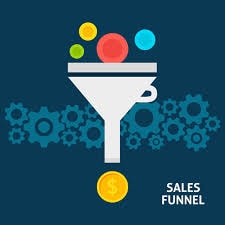
The Human Touch: Why Handwritten Mail Works
In a world where everybody’s blowing up inboxes and flooding Facebook feeds, a good ol’ yellow letter hits different. It ain’t digital. It’s physical. It’s personal. That makes people pause.
You’re not sending another slick postcard from some faceless real estate direct mail company. You’re dropping a handwritten letter that smells like real life — not a polished ad. That alone makes your yellow letter rise to the top of the pile. Do you know what makes direct mail easy efficient? If they respond it worked if they don’t it didn’t. That is the what. Now the why. This isn’t business this personal.
Why? Because handwritten direct mail screams, “This was meant for you.” The property owner sees their name and address on a real envelope, not some printed label from a corporate blast. That letter instantly feels more important — like it came from someone who actually gives a damn.
And that right there builds connection before you ever get on the phone. A yellow letter gets opened, read, and remembered. And if your message hits right, it gets your phone ringing.
Differentiating Your Direct Mail Strategy
Now let’s be clear — if all you’re doing is what every other newbie is doing, you’re just another sheep in the herd. The direct mail graveyard is full of folks who copied someone else’s campaign and wondered why it bombed.
You gotta stand out. That doesn’t mean crazy colors or weird fonts. It means thinking smarter. Target better. Talk like a human. And stop sending letters to people who ain’t ever gonna sell.
The edge comes from customizing your marketing materials to hit your target audience with precision. Skip the “spray and pray.” You want marketing that drives results — even if that means sending fewer yellow letters, but to the right folks.
For high-value properties or tight markets, try a more impactful approach. Send your yellow letter in a priority envelope or go the direct to seller marketing route with a real message and a problem-solving tone. The goal is to feel personal — not polished.
Your real estate marketing campaigns should scream “real person, real help,” not “another investor trying to hustle my house.” That’s the competitive direct mail company difference — but without paying a fortune.
Building a Targeted Residential List
Now, all this effort means nothing if you’re mailing to the wrong people. Your yellow letter should land in the hands of someone who’s actually thinking about selling — not some lookie-loo who just bought the place last month.
Start with trusted sources like ListSource or Melissa Data. These providers let you pull a clean list by property type, owner situation, and location. You want absentee owners, vacant homes, out-of-state landlords — the ones who might say “yes” to an offer.
Even after that, take time to dig deeper. Google Street View, county assessor sites, or tax records — all that helps you filter down to the most motivated property owners. You want recipients who are ready to respond. Remember you can always sell then scale with direct mail.
Look for red flags: overgrown yards, boarded windows, no cars in the driveway. That’s gold for yellow letter targeting. And don’t forget to double-check each address. Sending letters to the wrong place just burns your budget.
The Home-Based Yellow Letter Production Line
Don’t get it twisted — you don’t need a big budget or some fancy direct mail marketing firm to start slinging yellow letters. You can get this going from your kitchen table with a stack of pads, a printer, and a game plan.
Start with bulk yellow legal pads — easy to find and dirt cheap. Grab a template that feels like a real note, not some sales pitch. Print your message, slap your return address on it, and fold it into a plain white envelope. That’s your homemade campaign right there.
This ain’t about perfection. It’s about realness. Sellers respond better to personal letters than some glossy card that screams “mass produced.” The whole process is simple: write, print, stuff, stamp, repeat.
Batch it out. Do 25 a night. 50 a weekend. That’s how you build consistency — the fuel of every successful real estate hustle. Keep your budget in check, and you’ll be surprised how far a few bucks can take your business.
And when you’re ready to scale, tools like an upload tool has saved investors time and sanity. You can digitize the process, still keep the personal touch, and stay on top of your direct mail game.
Integrating Yellow Letters with Driving for Dollars

Want to really hit motivated sellers hard? Combine your yellow letter grind with a classic: driving for dollars. Get in your car and hit the streets. You’re not just out there sightseeing — you’re hunting for neglected houses, boarded-up windows, jungle lawns, busted gutters. You know the look.
When you spot one, write down the address, check ownership with county records, and send a yellow letter straight to that property owner. That’s a custom, laser-focused direct mail marketing campaign right there. And it works.
Build a spreadsheet or use a CRM to track each house you spot. Include when the letter went out, who owns it, and when to follow up. That’s how you start stacking deals.
You’re not just mailing blindly anymore — you’re using affordable direct to seller methods mixed with real-world hustle. It’s fast affordable direct contact that punches through all the noise.
Financial Considerations for DIY Marketing
Starting lean is smart. You don’t need a loan or a maxed-out card to launch a yellow letter campaign. A few bucks gets you pads, envelopes, and ink. That’s it. The biggest chunk of your cost? Stamps. Postage is where most of your money goes, so plan for it.
Split your budget smart. Don’t dump everything into one drop. Test small batches. Track what address types respond best. Then double down on those.
This ain’t about throwing cash around. It’s about strategic marketing that delivers results without wrecking your bank account. No beating around the bush. This is direct mail. Every letter should be a shot at a real deal — not wasted effort.
And once you grow, tools and automation can help you scale without losing your edge. But for now? Keep it gritty. Keep it simple. Keep it personal. The process is simple quick, and if you stick with it, you’ll start seeing calls — and checks.
Managing Incoming Calls and Leads

So you dropped your yellow letter campaign. Now what? Your phone’s blowing up. Good. That’s the whole point. This is where you separate the hustlers from the hopefuls — because what happens after the mail goes out makes or breaks your business.
Be ready. Have a dedicated number. Answer live when you can — no one likes voicemail tag. The process starts hot, and you gotta strike while the iron’s sizzling. A live answer builds trust. A missed call? That’s a maybe turned into a never.
Now don’t just pick up and wing it. Know what to say. Screen callers fast. Are they actually interested or just confused about why they got a letter? You want clients who are ready to talk, not just killing time.
Building Rapport and Qualifying Sellers
This ain’t just a numbers game — it’s a people game. Every property owner you talk to has a story, and if you can’t shut up and listen, you’ll never close deals.
Let them vent. Let them explain. Ask the right questions. Why are they thinking of selling? Is the house vacant? Inherited? Falling apart? Tired of tenants? You’re not just gathering facts — you’re identifying real motivation.
Empathy isn’t weakness — it’s a weapon. Let them feel heard. Offer real help. You’re not some vulture circling a deal — you’re someone who can solve their headache with speed and certainty.
Real estate is full of people tired of real estate. Be the one who makes it easy. Speak like a person. No script. No pitch. Just real talk. If you listen well and speak straight, you’ll qualify faster and build rapport that gets your phone ringing again for referrals and repeat deals.
From Lead to Offer: The Conversion Funnel

Alright — they’re motivated. You’re listening. Now it’s time to move from “maybe” to “money.” Follow-up is key. Some sellers need time. Don’t disappear. Follow up weekly. Stay top of mind without being annoying.
Do your homework. Before you offer anything, dig into comps, repairs, neighborhood vibes, and legal stuff. You’re not buying problems — you’re flipping solutions.
Every yellow letter lead should go through your system. Is the seller real? Is the house worth it? Is there meat on the bone? That’s the due diligence process.
Then comes the offer. No games. No lowball garbage. Make your offer make sense. Show them the math if you have to. If it works for them, great. If not, follow up later — people change their mind when time, stress, or life hits.
Every call, every letter, every deal is part of your system. Don’t get emotional. Don’t chase ghosts. Just keep the campaign moving. The more you tighten your follow-up game, the more you’ll turn direct mail into dollars.
Common Pitfalls and How to Avoid Them
Wanna know why most newbie investors crash and burn with yellow letter marketing? It’s not the letter. It’s the way they butcher the process. Let’s break down the biggest screw-ups — so you don’t repeat them.
First, don’t overthink it. This ain’t a brochure. This ain’t a pitch deck. It’s a damn yellow letter — handwritten, simple, to the point. Keep the message personal. Don’t jam it with logos, fancy fonts, or a backstory about your dog. Just write like you’re talking to the seller at their kitchen table.
Second, don’t get cute with the format. Black ink. Blue ink. Doesn’t matter. Just be clear. Fold the letter once. Use a real envelope. Skip the “look at me” tricks. Proven methods win because they work — not because they’re flashy.
Third — and this one hurts — inconsistency kills. If you mail one round and stop because the phone didn’t ring off the hook, you’re done before you start. Real direct mail is about frequency. Momentum. Discipline. You’re building a campaign, not testing a lottery ticket.
Also, answer the damn phone. Or at least return calls fast. You’d be shocked how many business owners lose deals because they weren’t ready when that address popped up on their caller ID. You can’t win if you ghost your own leads.
Last pitfall? Quitting too soon. Most deals don’t come on the first letter. Or the second. Sometimes it’s the sixth. Or the seventh. It’s a numbers game. Respect the grind. You’re building a machine — not hoping for magic.
Scaling Your Yellow Letter Marketing
Alright, now that you’ve got a working campaign, it’s time to scale. You’ve proven that your yellow letter process works. Calls are coming in. You’ve locked in a couple wins. Now let’s turn that hustle into a system.
First step: automate where you can. A simple upload system can help you manage lists, drop letters, and still keep that handwritten vibe without burning out your evenings.
Second: delegate. Bring on a VA to handle incoming calls, data entry, or keeping track of your address list. Your time’s better spent locking up deals — not stuffing envelopes.
Third: invest in services that save time without draining your budget. Plenty of tools out there make direct mail scalable. The right platform helps you stay consistent without burning out or losing track of leads.
Your business has to grow smarter, not just bigger. Use templates. Build checklists. Automate what you can. Then focus on the one thing no one else can do for you: close deals.
Beyond the First Deal: Long-Term Strategy
Your first deal’s a high. But don’t get drunk off it. That one check don’t mean you’ve made it. Real success is stacking wins — not celebrating once and going cold.
Start by analyzing your campaign data. Which letters worked? Which list gave you the most calls? Which address types got no love? Double down on what works, cut what doesn’t.
Then refine your lists. Skip the junk. Use better filters. Layer more motivation triggers — like age of home, equity, or absentee ownership. The more dialed in your target audience, the better your ROI.
And don’t forget — yellow letter marketing is just one weapon. Layer it with cold calling, texts, PPC — whatever fits your lane. This is a long game. Play smart, and the deals keep coming.
Kickstarting Your Wholesaling Career with Yellow Letters
You can sit around planning for the perfect moment, or you can send a damn yellow letter and start talking to sellers. The ones who win in real estate? They act. Not tomorrow. Today.
The biggest mistake most real estate investors make is trying to get everything perfect before they take a single shot. Wrong move. Your first campaign doesn’t have to be flawless — it has to go out.
You don’t need a huge budget or some big-shot team. You just need drive, a printer, and a little hustle. Write the letter. Create a list. Drop those envelopes. Repeat. This isn’t rocket science — it’s a street-smart way to find deals in any market.
The business isn’t about knowing it all — it’s about learning while doing. The beauty of the yellow letter is that it lets you move quick. You learn fast. You mess up, adjust, and try again.
Most of your wins will come from stuff you figured out the hard way. That’s okay. Experience is the best teacher — especially when it’s your own cash and your own time on the line.
Keep it gritty. Keep it real. The leads don’t care if you’ve been in real estate for a week or a decade. They care if you’re the one who can solve their problem. Be that person.
Your Next Step: Download Our Exclusive Lead Magnet

Now that you know how to launch a yellow letter campaign like a pro, take it one step further. We built a resource to make your launch even faster.
Download our exclusive guide to create your own targeted yellow letter system. This ain’t fluff — it’s a checklist, templates, and step-by-step walkthrough built from real deals and tested results.
Whether you’re new to the game or ready to scale, this tool helps you hit the ground running. You’ll know who to target, what to write, and how to manage your campaign without blowing your budget.
It even walks you through how to upload your data and keep your business sharp without drowning in admin work.
The streets are full of sellers. The ones who find them? The ones who move. You’ve got the blueprint. Now it’s on you to hit send.